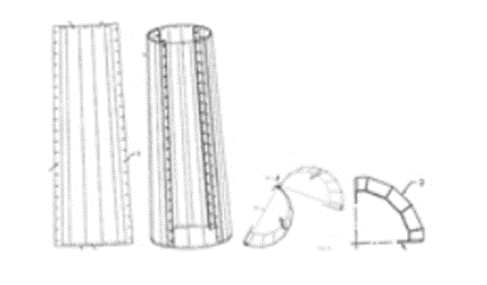
Validity of designs for segment of wind turbine tower – General Court ruling
A recent decision of the EU General Court concerning wind turbines highlights the importance of the “informed user” in design law. In this article we take a brief look at the decision and the practical implications.
Overview
In TA Towers ApS v EUIPO (Cases T-201/22 and T-202/22) (24 January 2024), the EU General Court ruled that segments which can be assembled into the tower of a wind turbine had an individual character due to their shape. Their shape would produce a circular cylindrical tower when assembled, unlike a prior design which would produce a conical cylinder. This difference would create a different overall impression, despite other common features.
Facts
The EUIPO and Board of Appeal had declared the Applicant’s Registered Community Designs (“RCDs”) in segments of a wind turbine tower as invalid on the ground that they lacked individual character in relation to a design made available in a prior patent application (the “prior design”). The Applicant appealed to the EU General Court.
Both of the Applicant’s designs featured a number of bends extending the length of the segment, resulting in parallel panels. The prior design had four bends in each segment, creating five parallel panels, whereas each RCD had two and three bends creating three and four parallel panels respectively. In 2D, the prior design was wider at the bottom than the top, giving it a trapezial shape, and the RCDs were rectangular.

Figure 1: the RCDs

Figure 2: the prior design
General Court’s ruling
The General Court considered that the informed user was a professional in the construction sector with some knowledge of different segments for towers and a relatively high level of attention. The Applicant had argued that the customers for these products were few and highly specialised, but this could not have any bearing on the informed user, which the court reaffirmed is a construct of law rather than fact.
Nonetheless, though not a sectoral expert, the court found that the informed user would take a different overall impression from the RCDs compared to the prior design. Most significantly, the informed user would recognise that the assembled segments of the RCDs produce a circular cylinder, and the prior design a conical cylinder. The Appeal Board had argued that the trapezial shape of the prior design was so slight that it would have appeared virtually rectangular in reality. However, the court considered this to be irrelevant as the trapezial shape was clearly discernible from the registered illustrations.
Additionally, the court confirmed that the designer had a certain degree of design freedom in the size, number, shape and arrangement of the bends; design freedom which was in fact exploited. This difference was not however significant enough in itself to create a different overall impression.
The General Court concluded that the Board had erred in its decisions, which it annulled.
Key takeaways
This General Court judgment on the validity of the RCDs illustrates the important role of the ‘informed user’ in design law. The ‘informed user’ in design law lies somewhere between the ‘average consumer’ of trade mark law, and a sectoral expert with detailed expertise. Even if the real-life consumer of the product is in fact a sectoral expert, the informed user can only be defined conceptually and not on a case-by-case basis.
Differences in respect of key aspects of a product which will be retained by the informed user, in this case the shape of the segments, can be sufficient to create a different overall impression despite common features between two designs.
This decision also shows how a court will attach more importance to registered design illustrations than the human eye’s perception of the design in tangible form.








